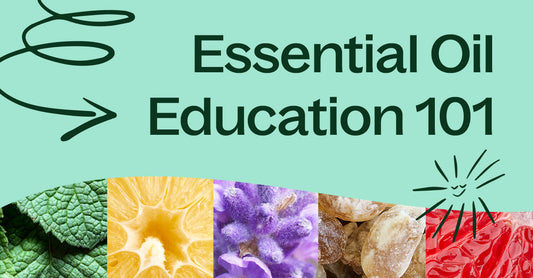In today’s post from The Bridge we’ll discuss the genesis of fever and the role it plays in helping the body fight off illness.
Those of us who are a bit more….(ahem) *mature* in age may remember singer Peggy Lee on TV, crooning “You give me fever” into the microphone.
What actually causes fever? How do we “get” one, and why? Is it dangerous, or can it actually be helpful? (< The Ebers Papyrus, an Egyptian medical text written around 1500 B.C., discusses common medical ailments of the time. Many illnesses, including fever, were treated with a combination of herbs, spices, and magical incantations chanted over the patient by priest-physicians. In one section of the translated papyrus text, there’s a description of an infection accompanied by fever. When a “wound is inflamed… “He (the physician) had the patient well covered up to excite at the same time a violent heat and thirst. When the fever began to abate somewhat, he made him drink cold water. If he broke out in a violent sweat, the patient was considered cured.” In Japanese and Chinese writings dating from the sixteenth century, the use of thermal hot spring baths to treat all manner of illnesses, including fever, was widespread. The reasoning was that fever is caused by an excess buildup of heat in the blood; therefore, drawing off some of the patient’s blood would remove the source of the fever. The famous “barber pole” with its swirling white and red colors refers not only to the proprietor who would cut hair and shave beards, but also act as blood-letter. There are differing explanations as to what the colors and the pole itself represent; one common description is that the red swirl on the pole represents blood; the white swirl, the tourniquet used to raise veins to the surface of the skin (or the bandages used afterwards), and the pole represents the stick the patient squeezed to help force the flow of blood. In 1763, the Rev. Edward Stone described his success in treating fifty patients with various “agues” (archaic term used to describe fevers) with extracts of white willow bark . We now know that white willow bark contains salicylic acid, and a component similar to this makes up our modern aspirin. When healthy, our bodies maintain a nearly constant temperature of 98.6 degrees Fahrenheit (37.0 degrees Celsius). Fever occurs when the normal “set point” of 98.6 degrees is turned upwards by the hypothalamus, the “thermostat” of the brain. Elevations in body temperature normally happen during illnesses like a bacterial or viral infection, but can also happen in heat exhaustion/heat stroke, after vaccinations, an injury, or in inflammatory conditions like rheumatoid arthritis. (Fever can even occur with something as simple as overdressing a baby.) In response to one of the conditions described above, the immune system recognizes a threat to the body and goes on high alert. Let’s say that at daycare your child is exposed to hand-foot-mouth disease by a child infected with it. Once infection sets in, body chemicals called pyrogens are produced, either by the virus itself or from body tissues invaded by the virus. These pyrogens are carried throughout the body by the circulatory system to the brain, where they enter the hypothalamus. Although the process is complex, it can be described simply: pyrogens shut off heat-sensing neurons (nerve cells), and turn on cold-sensing neurons. When the cold-sensing neurons are turned on, temperature sensors in the hypothalamus think that the body is colder than it actually is, so it compensates by raising the body temperature several degrees. Also, a higher body temperature can stimulate the development of antibodies designed to help ward off infection. At the same time, having a fever may actually kill bacteria or viruses that can only survive in a narrow temperature range. So you can see that treating a fever with ibuprofen, tylenol, or aspirin (aspirin shouldn’t used in children) can actually re-set those temperature sensors, thereby telling the immune system to put on the brakes and stop pumping out helpful antibodies and blood cells! Should you treat it or leave it alone? When is a fever dangerous and when can you safely stay at home? Note: **If your child is sick, always contact the primary care physician. The information that follows contains general guidelines which do not apply to every situation, and should not be construed as medical advice.** The majority of fevers are not dangerous, and as I described above, they can actually aid the body in fighting off illness. When your little one has a mild or low-grade fever (generally considered to be 100.4 to about 101.5 degrees, though sources differ on the range) he/she may be listless or a little sleepy, have that “shiny sick” look in their eyes, may not feel like playing with favorite toys, be “clingy” or not much interested in eating. You’ll feel their hearts beat a little more quickly than normal, and you’ll see that their breathing rate will be a bit faster in response to the fever. While these are all normal symptoms and generally not a cause for concern, there are measures that you can take to help ease your child’s discomfort. Assist your child in feeling better by encouraging rest or cuddling. Taking frequent small sips of water, room temperature chamomile tea or sucking on a popsicle is helpful in maintaining hydration. Giving the child a tepid (lukewarm) sponge bath or a cool cloth on the forehead may help aid comfort. You may consider using Roman Chamomile Hydrosol, diluted, in a sponge bath or on a cloth for the forehead. Call your doctor’s office to let them know what kind of symptoms your little one is having so they can advise you on a course of treatment. Should your child complain of severe pain (like a sore throat which makes swallowing difficult, or body aches that make it hard to find a comfortable position), call the doctor’s office. Ask if treating with tylenol or ibuprofen is indicated or if other intervention is necessary. A high fever (over about 103, though again sources differ), headache, stiff neck, vomiting and/or diarrhea, dry diapers/no tears when crying, or an inability to wake your child means a call to the doctor is in immediate order. If it’s after hours or on the weekend, consider an immediate urgent care/ER visit, and you can always call 911 for help. Sometimes during a fever, a child will have a febrile seizure. This is a body convulsion brought on by the fever, most often during the first day the child is sick. Febrile seizures are terrifying for parents to witness, but only in the most extreme cases are they harmful to the child. According to the National Institute of Neurologic Disorders and Stroke, one in 25 children between the ages of 6 months-5 years will suffer at least one febrile seizure. One is that the shivering mechanism the body uses to produce and dissipate heat is immature in infants and toddlers. Instead of inducing shivering to dissipate collected heat from the skin, the brain causes a seizure instead. Other scientists postulate that along with the pyrogens released during an illness, the brain also releases protein-based cytokines. These temporarily “scramble” the circuits in the brain, causing a seizure. The first thing to remember is to try not to panic. Though I’m an ER nurse who has witnessed countless febrile seizures, when my own daughter had one at 15 months old, I had to fight to remain calm. Most seizures last about 15-30 seconds, but I guarantee it *feels* much longer than that! Jaw spasms caused by a seizure are powerful! You can lose a finger if you try to open the mouth to insert something to keep the child’s airway open. Also, the object could break and cause the child to choke. If your child is in bed, place your body by the edge of the bed to make sure he/she doesn’t fall off. Do not hold or restrain the child during the seizure. If you have the presence of mind to do so, look at the clock or try to time the seizure so you can relay this information to the doctor. Though fevers are annoying and bothersome, remember that most are harmless and actually help the body fight off infection. Never hesitate to call the doctor if you are unsure or concerned about your child’s condition. In most cases, lots of TLC, rest, and fluids are all that it will take to get your little one back on track. We want you to learn as much as you want about essential oils and how to use them safely. If you have any questions, comments or other concerns, you’re welcome to email us at aromatherapist@planttherapy.com. Or come join us on Facebook at Safe Essential Oil Recipes! References: Bryan, PW. The Papyrus Ebers. Geoffrey Bles, London, 1930. Oxford Journals, Clinical Infectious Diseases, V.31(5):S154-S156, 2000. Fever has been discussed in written history for thousands of years.
In ancient Roman times, during the reign of Tiberius Caesar, the scholar Aulus Cornelius Celsus described treatment of fever:
During the Middle Ages, blood-letting was a favored cure for fever.
In the 18th and 19th centuries, doctors began treating fevers with anti-pyretic (fever-fighting) medications.
What does modern medicine tell us about the genesis of fever?
So, what happens in the hypothalamus to cause a fever?
A fever is thought to help defend the body because it stimulates the production of white blood cells which help fight infection.
So what should you do, then, if your child gets a fever?
When You Might Consider Leaving a Fever “Alone”
When You Should Consider Treating a Fever
When You Should Definitely Seek Medical Attention
Though the exact cause is unknown, several theories have been advanced.
First Aid for a Febrile Seizure
Don’t put anything in the child’s mouth.
Move furniture out of the way if the child is on the floor so he/she doesn’t injure themselves by striking anything while seizing.
Once the seizure stops, gently place the child on their side (recovery position) and seek medical attention.
Mackowiak, Philip A. Brief History of Antipyretic Therapy.
Bierman, William. The History of Fever Therapy in the Treatment of Disease. Bulletin of NY Academic Medicine, V.18(1); 1942.
Medtech website. Bloodletting is Back! Here’s everything you need to know about this ancient practice. www.medtech.edu/blog/the-history-progression-and-modern-stance-on-bloodletting
National Institute of Neurological Disorders and Stroke website. Febrile Seizures fact Sheet. www.ninds.nih.gov/disorders/febrile_seizures/detail_febrile_seizures.htm
National Health Services (UK) website. Causes of febrile seizures. www.nhs.uk/conditions/febrile-convulsions/pages/causes.aspx











